The return of the Eberhard Scafograf 300 – overview of an Iconic dive watch
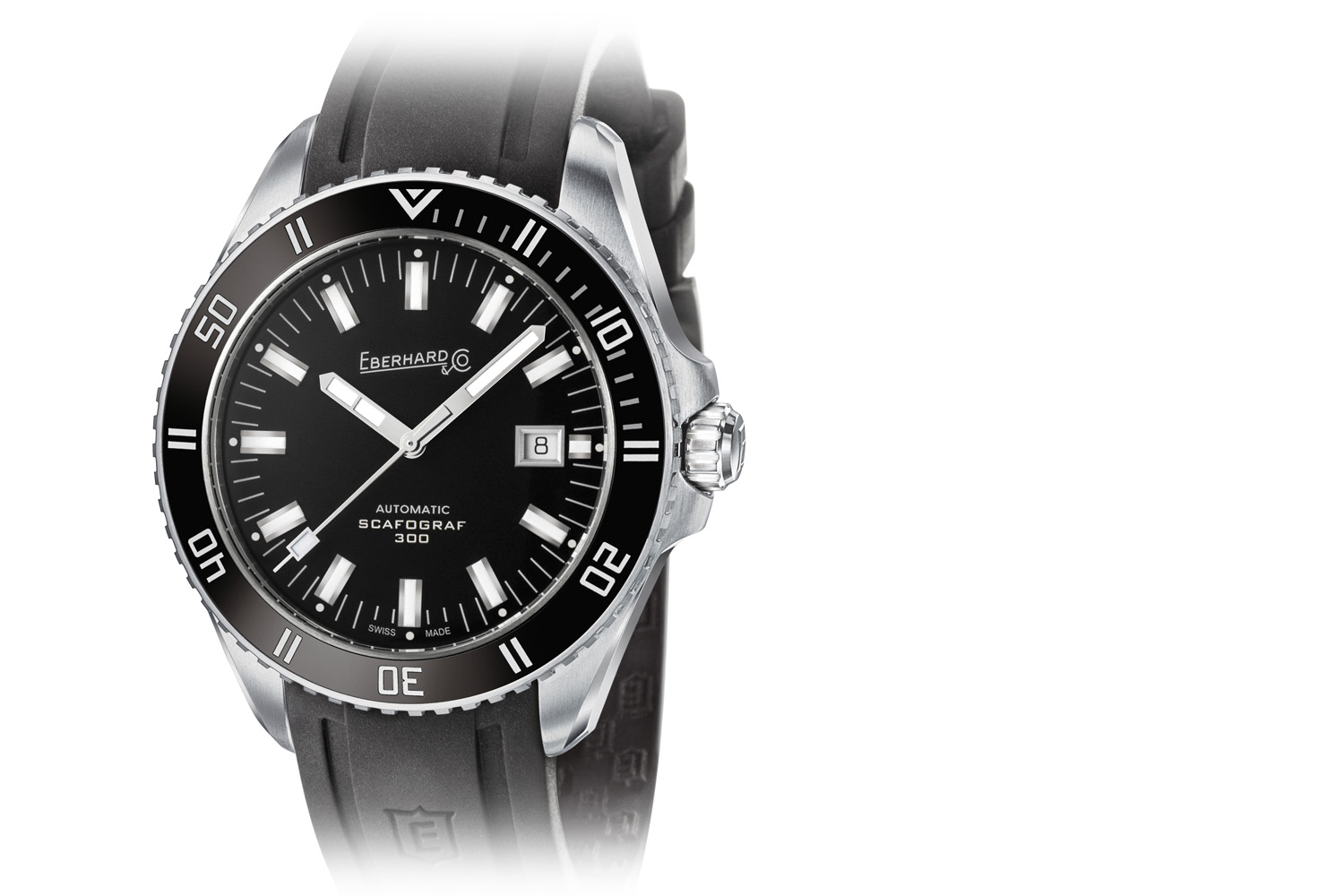
Eberhard occupies a great chapter in the history of the Swiss watch industry. However, it belongs to a segment rather obscure and less known from a wider audience. A segment which contains companies likes Venus, Martel, Leonidas, Lemania, Minerva, Excelsior Park, Gallet, Nivada, to name a few… but a few that were right from the start instrumental for producing calibres and watches that have propelled, as a whole, the Swiss watch industry unequivocally to its current leading position. So it is quite excited that we’re about to explain the return of the Eberhard Scafograf 300, one of the less known but still iconic dive watch.
History and Milestones of the Eberhard Scafograf
Founded in 1887 by Georges Eberhard, in La Chaux-de-Fonds, Eberhard & Co started to produce watches and quickly, it was right at the very edge of creativity. In 1935, innovation centred on the double pulsating chronograph, offering the stop and start functions without having to reset to zero; in 1938, the launch of the first chronograph with an hour counter. When 1939 arrived, it heralded a new revolution: the company created a wrist chronograph equipped with an innovative fly-back device, enabling dual time keeping. These were the years when Eberhard chronographs were used extensively by the Italian Royal Navy’s officers.
After the war, the first ladies model was launched, after which, at the end of the 50s, the first Extra-fort made its appearance, a real watch industry jewel with seconds hand re-zeroing by means of a sliding push piece. At this exact moment (late 1950’s), the company also started to turn its attention to another type of wristwatch. Technical watches were the next big thing and Eberhard introduced the Scientigraf Ref. 11538 (as an answer to the Rolex Explorer, Milgauss and Omega Railmaster) and the first generation 100m Scafograf, Ref.11535 (as an answer to the Fifty Fathoms by Blancpain and the Rolex Submariner). Last but not least, what is seen as Eberhard’s most sought after watch, the Contograf, which was introduced in the mid 1960s under the reference 31501, a 39mm diving-inspired two register chronograph. But let’s go to the main star of the article, which is their dive watch, the Scafograf.
The Eberhard Scafograf is for collectors an insiders’ grail. From the very early, archetypal divers watches, it remains, along with the Zodiac Sea-Wolf, the one with a certain mystique around its presence – even if it is relatively cheap in the market, despite its scarcity, especially compared with the offerings from Rolex, Omega and Blancpain. The Scafograf 100 was produced around late 1958 and only 200 were made. It was a 36mm stainless steel watch with a 100-meter rating, with no rotating bezel and a very interesting dial. After a short period (1959), the 200-meter model was introduced and, like the previous one, only 200 were made ( with the reference 11536). In this first generation we can see a rotating bezel with no protection on the crown guard, something that was rectified in the second generation – with two references 11545 for the non-date and 11706 with a date. The case had extreme similarities with the Omega Seamaster and, up to this point, the calibres were all based on the Felsa cal. 1560.
In 1964 the Scafograf had been redesigned. The calibre was changed to the cal. 266-123 (based on the Ebel calibre 214), the case reached 42mm in diameter, waterproofness reached 300 meters and the dial layout changed, with baton hands and straight indexes. For many this is the most iconic version of the Scaforgaf, and it’s this version that Eberhard used to create this year’s release. However, the family continued to evolve. In 1969, following the trends of the 1970s, the company introduced the 400 and the Super Scafograf. The first was a 400-meter dive watch with tonneau case (39mm diameter) while the second one was a deep-sea monster (750-meter rating) using a case already seen on many deep-sea diver watches from the time such as the Zodiac Super-Sea Wolf or other offering from Blancpain, Zenith, Universal Geneve, Bulova and Favre Leuba to name but a few. The last really peculiar version of the model was introduced in 1983. It was a 1000-meter quartz driven dive watch with a He-Gas escape valve integrated into the caseback. The watch also had a removable bezel. The design was shared with Scubapro and, most famous, with Breitling – model Super-Ocean Deep Sea Ref.81190.
The Eberhard Scafograf 300 – 2016 Edition
The newly released Eberhard Scafograf 300 is a proper dive watch, which honours its predecessors in all areas. The case is excellently proportioned. Its 43mm diameter makes it a large-ish watch but most importantly it has a rather thin profile of 12,6mm – at least for such a dive tool. It is made of stainless steel and the case is satin polished, while we can find a helium escape valve at 9 o’clock. The crown is protected by crown-guards and has a nice heft and feeling when screwing or unscrewing and that means a job well done by Eberhard. Also the new Scafograf has an anti-reflecting sapphire glass while on the opposite side we find a classic screwed caseback, nicely decorated. The watch can be bought either with a rubber strap or with a steel bracelet with a Déclic® deployment clasp (Patented), and here I must notice that the strap left me with a very positive experience. It is integrated in-between the lugs, very comfy, and flexible with excellent feel on the wrist. Generally, there are no surprises here, and everything is extremely well made.
The most interesting thing of the model, for me, is the dial. It is reminiscent of the vintage Scafograf 300 with large baton type hands (filled with SuperLuminova). We also have a second hand available in 3 colors: bright yellow, white and deep blue. Each version has identical coloured details like the circumferential-placed small pips close to the applied hour indexes and also the font-colour of the model name. Along with the luminescent applied indexes, we also find a date aperture at 3 o’clock. As a result, it gives a dial which is easy to read at a glance, something that is very important in a dive watch. The Eberhard Scafograf 300 has a classy and uncluttered dial.
The ceramic black ceramic bezel is also well executed. Grip is excellent and the feeling when manipulating is very pleasing. The font used is highly legible, while the 15-minute dive scale is luminous. Yet again things are where they should be. Everything is neat and tidy without any major surprises. The combination of the dial with the bezel, something very important for every dive watch, offers outstanding legibility. Eberhard chose a robust automatic calibre for this watch; the ETA-2824-2. This mechanical workhorse has automatic winding, twenty-five jewel and beats at 28,800bph, with a 40-hour power reserve – and it will offer reliability and excellent performance.
Conclusion
The new Eberhard Scafograf 300, Ref.41034 is clearly a very balanced wristwatch with an important pedigree from a great Swiss company. It has all those little details that make it a proper dive watch and it manages to retain an all-around character. At the same time, it has premium materials and a very good level of construction and finishing. It’s priced at 2490 euro with the rubber strap and 3070 euro with the steel bracelet and its competitors include watches from Oris, Doxa and Tudor. The competition might be fierce but the Eberhard Scafograf 300 can hold its own. Surely a nice alternative if you are looking for a watch in this specific market.

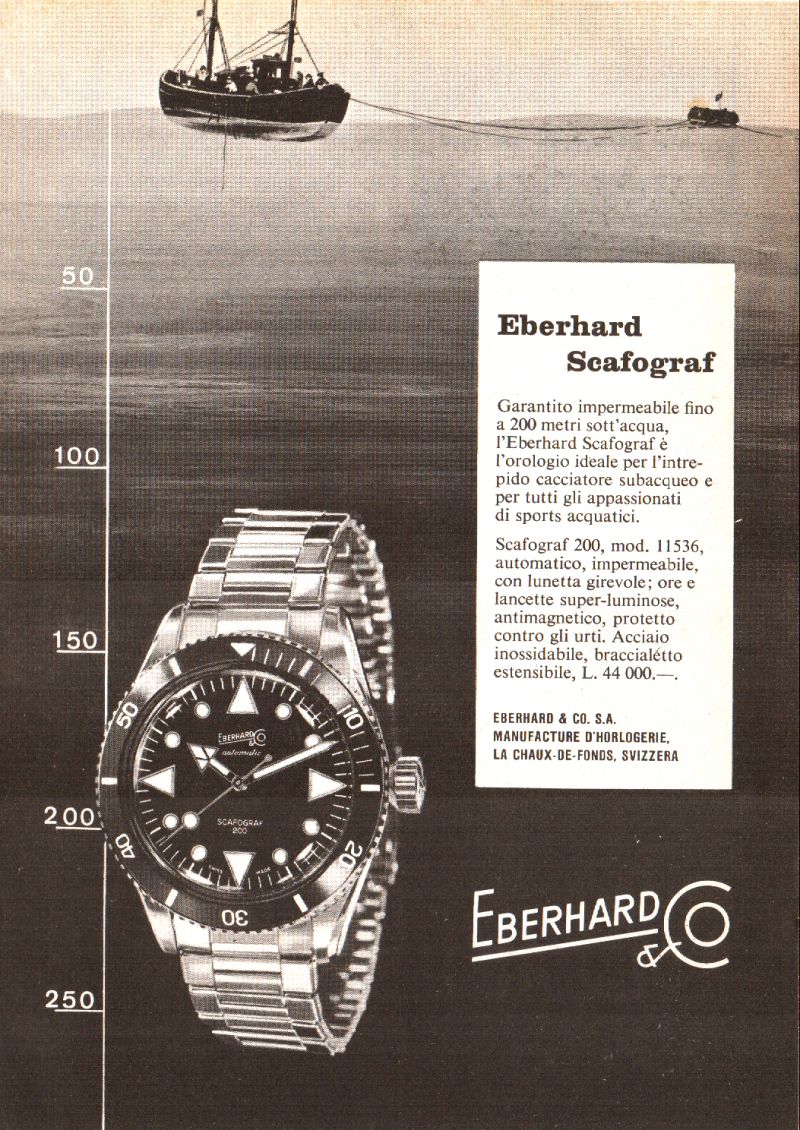
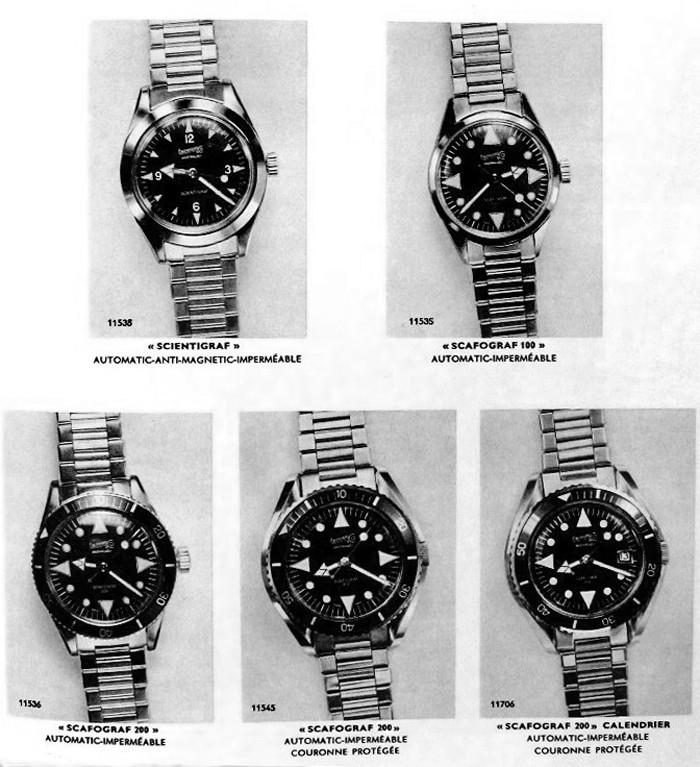
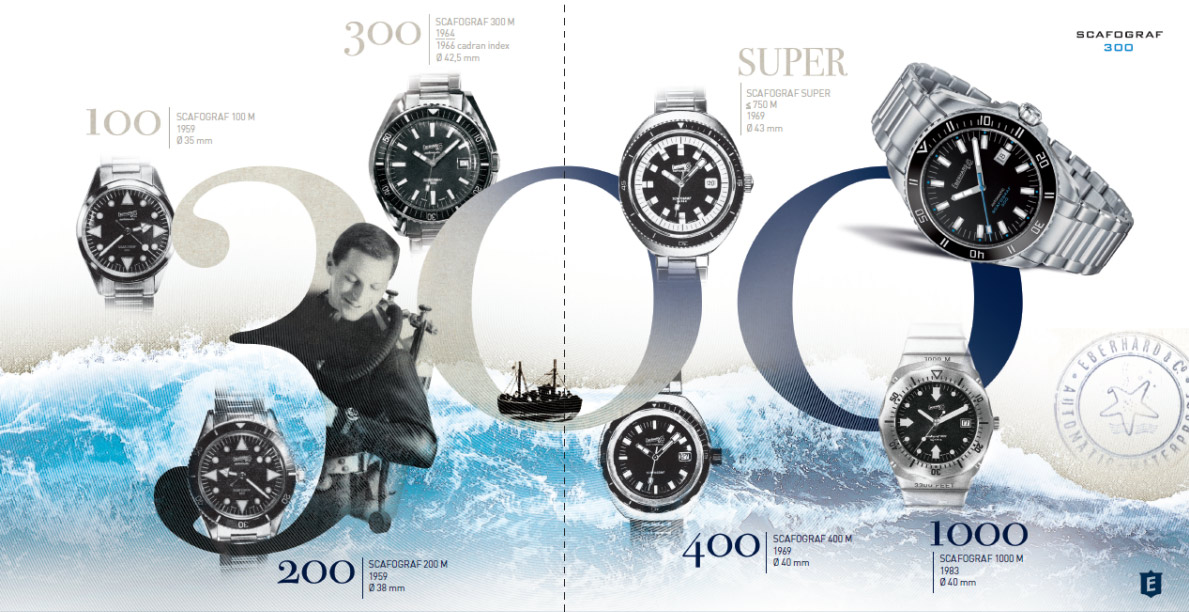

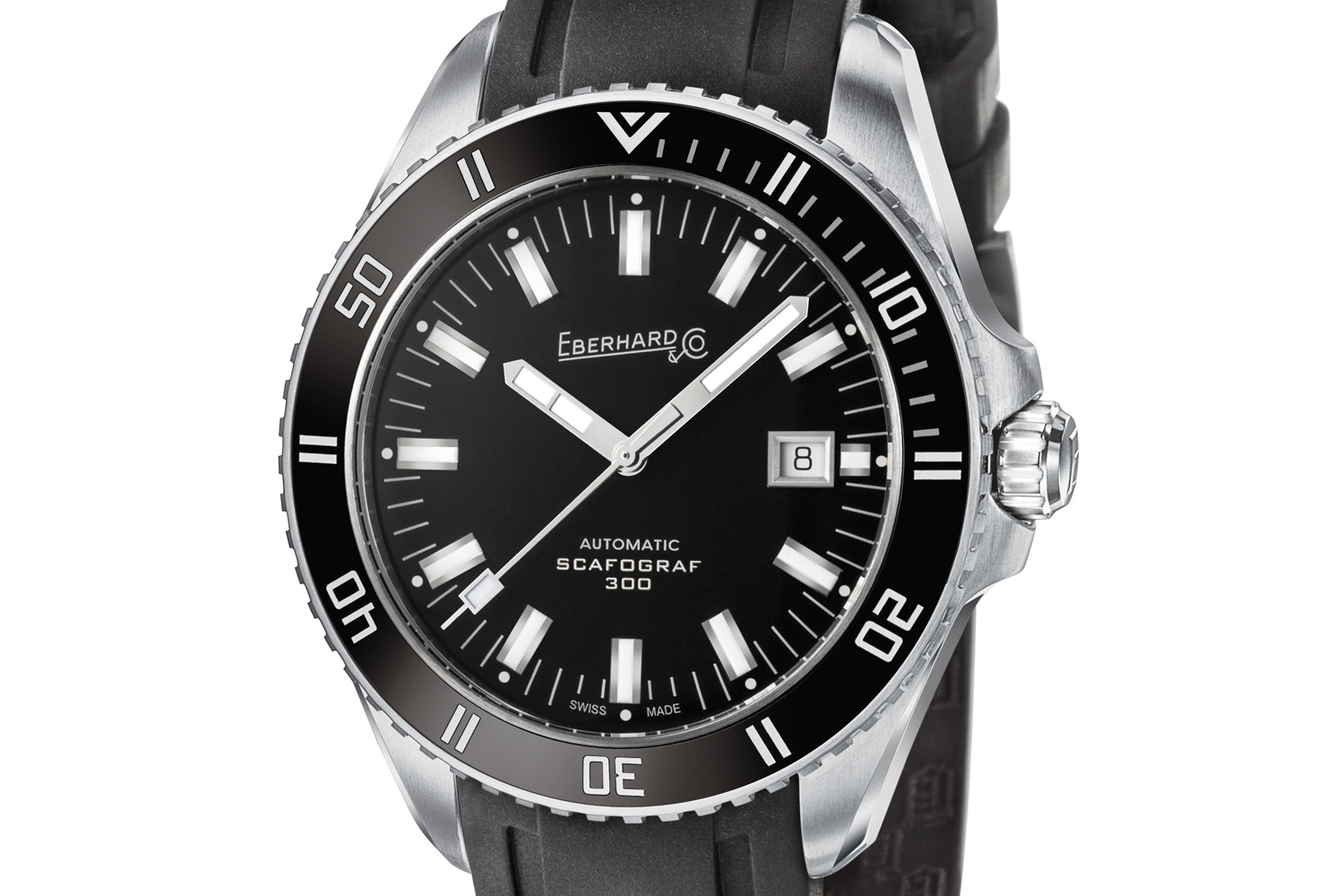
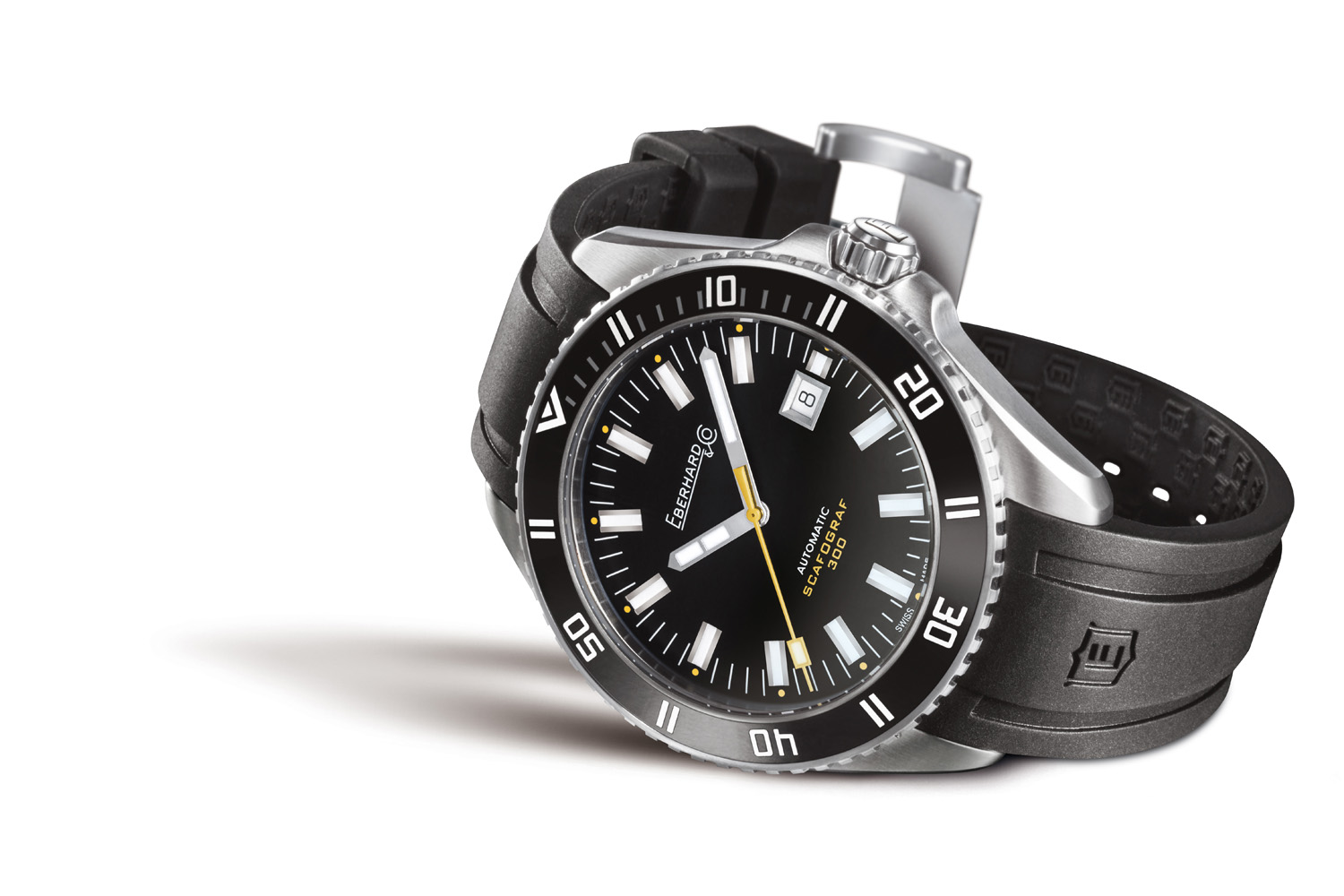
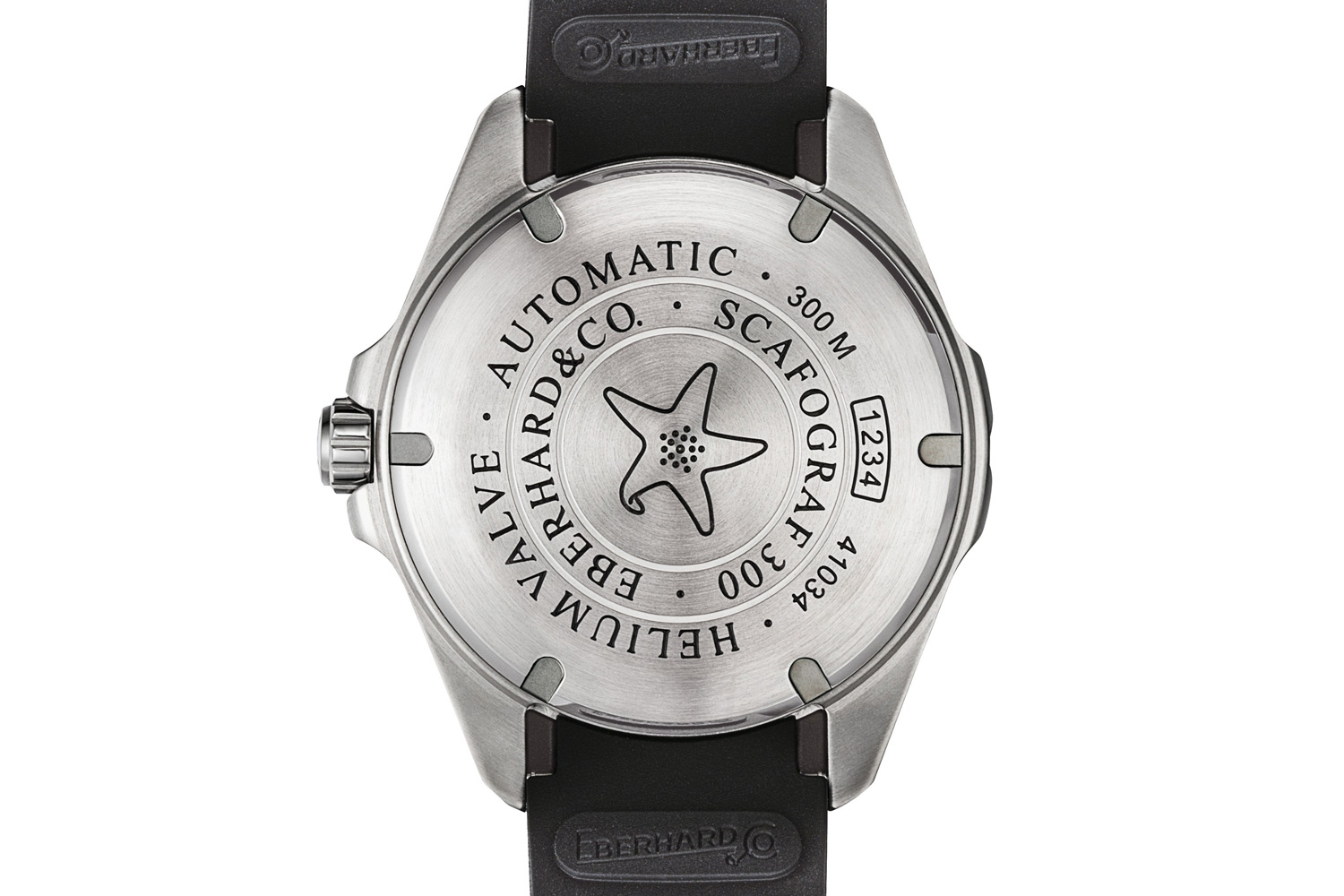



1 response
I will not get tired to write it after a review like that. ETA 2824 and price 2490-3070 euros? Are you nuts? Why not spend 500 more and get a Tudor BB with in-house mvt? Oris is much logical choice, without a question.